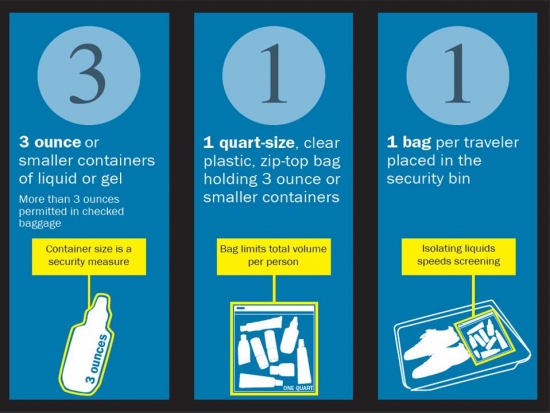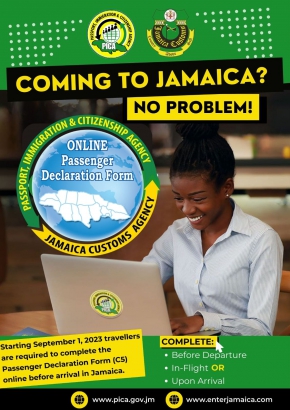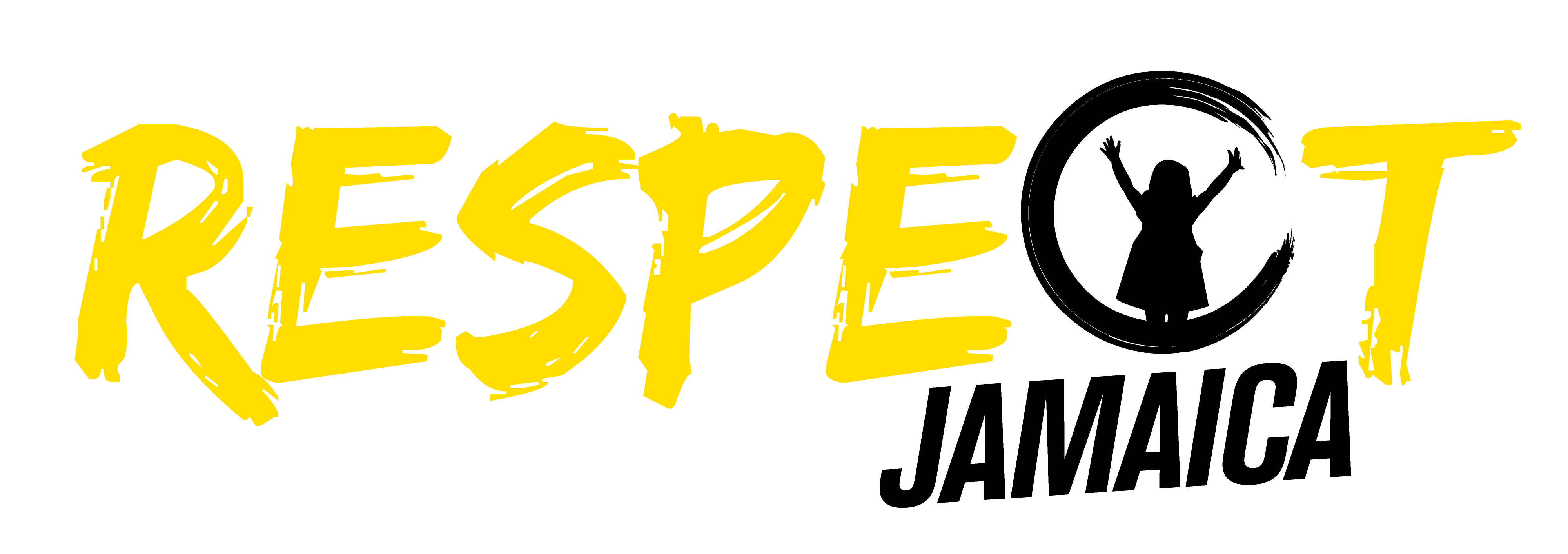- Flight Information
- Travel Planning
- Ground Transportation
- Shopping & Dining
- Airline Services
- Business Development
- About MBJ
- About MBJ
- MBJ Mission & Vision
- Facts & Statistics
- Facilities
- News Releases
- Photo & Video Gallery
- Terminal Map
- ACI Training
- Airport Development
- Art Programme
- Awards
- Community Engagement
- Charity Run/Walk
- Charity Run/Walk Grant
- Emergency Response Service
- Employment Opportunities
- Environmental Efforts
- Environmental Policy
- Information Security Policy
- MBJ SMS Manual
- Restricted Area Passes
- Safety Concern
- SMS Procedure Manual
- MBJ Business Continuity Policy
- Quality Management System

Security 101

Below you will find general information about security before travelling.
Metal is not your friend. Wear clothing without metallic embellishment and be ready to remove your belt if it has a metal buckle. Tuck your jewelry into your carry-on bag during the screening process. Place coins and keys in your purse/bag or empty your pockets into a plastic bin when you arrive at the screening checkpoint. If you have body piercings, either remove them before you go through security or resign yourself to a pat-down screening.
Put liquids and gels into a one-quart re-sealable plastic bag. All liquids, aerosols and gels (LAG) items must be in 100 milliliter (3.4 ounces) or smaller containers. Every liquid and gel product you carry into the passenger compartment must meet this requirement and fit into a single, one-quart re-sealable clear plastic bag. If you must bring larger liquid or gel items, you are required to place them in your checked luggage, unless they are medically necessary (see exemption below).
Powdered and Granular Substances 12oz/34G and over are required to be placed in your checked luggage. Restriction on powdered substances in hand luggage include items such as: cosmetics, coffee and spices. Baby formula and medically prescribed items are exempted. Powdered substances purchased post-security are approved for transportation in carry-on luggage. This is in keeping with new rules established by the "Transportation Security Administration (TSA)".
Medication and other Dietary Requirements: Passengers are to declare their medication and special supplies at the security screening checkpoint. Upon declaration, the Port Security Officer will determine if the types and quantities of the liquids, aerosols and/or gels, fit within one of the following categories and are in quantities reasonably necessary for the passenger's journey. When required, the passenger is to provide proof of authenticity of the exempted LAGs.
- Special dietary requirements: Baby formula/milk and baby food in containers for baby or small child travelling. Baby products may include: wet wipes, baby milk or juice, sterilized water and baby meals in liquid, gel or paste form; or special foods required by lactose or gelatin-intolerant passengers.
- LAGs for medical purposes: Prescribed and over-the-counter medications may be accepted when the total volume exceeds 100 ml if it is essential to carry the medicine in the cabin and the amount is no more than necessary for the trip.
Prepare laptops and cameras for X-ray screening. You are required to take your laptop out of its case. If you are carrying undeveloped film, ask the Port Security Officer to inspect it by hand as X-ray screening will damage undeveloped film.
Plan ahead if you are wearing a coat or jacket. You will need to place your coat or jacket in a plastic bin at the security screening checkpoint. This will take extra time; you will also need to remove your shoes and place them, your carry-on and metal items in bins for X-ray screening. Give yourself plenty of time to regroup after the screening process is complete.
Pat Down
What triggers a pat-down?
Pat-downs are used to resolve alarms triggered by metal detectors and as part of a randomized process at the checkpoint. Pat-downs are specifically used to resolve alarms and prevent dangerous items from going on a plane, the vast majority of passengers will not receive a pat-down at the checkpoint.
What can I do to prevent an alarm at the security checkpoint?
The majority of pat-downs occur when a passenger alarms at the metal detector. To reduce this circumstance, the most important thing you can do is take everything out of your pockets before you go through screening. Also, when travelling, avoid wearing clothes with a high metal content, and put heavy jewelry on after you go through security.
What do I do during a pat-down?
All passengers have important rights during a pat-down. You have the right to request the pat-down be conducted in a private room and you have the right to have the pat-down witnessed by a person of your choice. All pat-downs are only conducted by all officers, however, males do not pat-down females. The officer will explain the pat-down process before and during the pat-down. If you have a medical device, please inform the officer.
Will children receive pat-downs?
Security Officers will work with parents to resolve any alarms at the checkpoint. If required, a child may receive a modified pat-down. Parents are encouraged to ensure their children have taken all items out of their pockets as they go through the security checkpoint.







